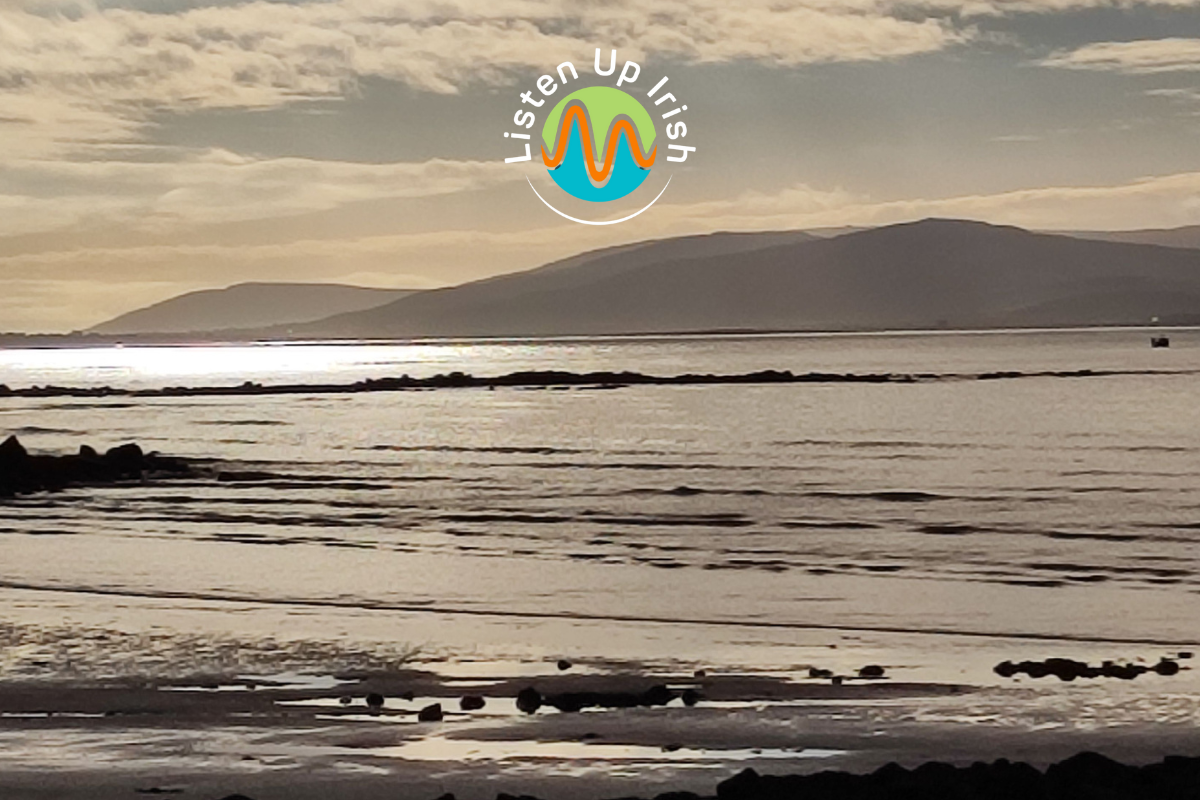Fata, Práta, nó Preáta!
As with any language the Irish language is not spoken in the exact same way up and down the country. The regional differences might make life a little complicated for someone learning Irish, but they certainly add an extra flavour.
Have you heard these lines before:
"Bheadh na fataí nite, bruite, agus ite ag an gConnachtach
sula mbeadh 'práta' ráite ag an Muimhneach."
(Click on the video above to hear the audio, and to see the English translation).
We'll come back to the potatoes in a minute, but first here's a brief introduction to the dialects of Irish, and to standard Irish.
Dialects of Irish
A dialect is a regional variety of a language which differs from the standard form of the language. There are three main dialects of Irish - Ulster, Connacht and Munster. There are some pronunciation differences between each of the dialects, and also some differences in terms of vocabulary. However, the similarities between the dialects are far greater than the differences! It is all the one language ag deireadh an lae, at the end of the day!
Standard Irish
In terms of spoken Irish none of the three main dialects are considered to be more 'standard' than any of the others. When it comes to the written language, however, it is a different story!
Since the foundation of the State there was a realisation that, as with any major language, a written standard for the Irish language should be developed. After much debate, a written standard (along with spelling reform) was finally published by the Government in 1958.
The Caighdeán Oifigiúil (Official Standard) is an attempt to reach a consensus between the three dialects when it comes to the written language. It is largely based on the most commonly used forms from each dialect. The official standard is intended for use in official and semi-official documents, and sets down rules of grammar, punctuation and spelling. The 'Caighdeán Oifigiúil', has been revised a number of times since 1958.
In terms of vocabulary the Irish to English dictionary, edited by Ó Dónaill, and published in 1977 (an Foclóir Gaeilge-Béarla) is generally accepted as the reference as to whether any particular word may be considered 'standard Irish' or a dialectal variant.
Vocabulary differences between dialects
What do you call that piece of furniture in which you store cups, mugs and plates? Is it a 'press', or a 'cupboard'? The answer you give will depend, of course, on where you live - try telling someone outside of Ireland to put something in a 'press' and they will give you a puzzled look!
In the same way there may sometimes be a more regional/dialectal word in the Irish language for something. For example the word 'bomaite' is more commonly used in Ulster Irish for 'minute', than the word 'nóiméad'.
If a word is considered non-standard then there will only be a limited amount of information about that word in the 1977 dictionary; the reader is instead directed to the entry for the more 'standard' form of the word..
See the limited entry for the Ulster word 'bomaite' . (Go to www.teanglann.ie for the online version of the 1977 dictionary). As you can see below the entry for 'bomaite' simply redirects to the standard 'nóiméad'.

Compare the amount of information for 'bomaite' to the amount of information given for 'nóiméad':

And finally, the potatoes...
The 'standard' word for potato is 'práta'; ('na prátaí': the potatoes). This is the word most commonly used in Munster dialect also.
If you spend time in Connemara however, you will notice that the word 'fata' is used in spoken Irish instead of 'práta'. And in Ulster Irish potatoes are commonly called 'préata' or 'preáta'.
Which dialect should I learn?
This is one of the most common questions I get from people who are starting to learn Irish for the first time. It's good to be aware of the differences between the main dialects, of course, but starting out it is best to focus on understanding the structure of the language, and the structure of the language is the same across all of the dialects! Once you have a good understanding of the structure of the language and have started to build up some vocabulary then you might like to zone in a little more on one particular dialect. The best way to do this is to listen to programmes which use whichever dialect you are most interested in.
My online course, Beginner Irish teaches the most important structures of the language in just 8 weeks, and can be taken as a live course, or in a self-study format. My Beyond Beginner courses are designed to continue learning about the structure of the language, but also focus on building vocabulary, learning the words and phrases that are most commonly used in everyday speech. The Learning Irish Through Literature is a great course for getting a lot of language input through reading and listening to extracts from great works of Irish literature. (By the way, the voice on the video above is that of Joe Ó Fátharta, from Indreabhán in the Cois Fharraige Gaeltacht. Joe is also the voice on the Learning Irish Through Literature and Beyond Beginner courses).
Most importantly of all...
don't forget, it's all the one language! Do not get hung up on the dialectal differences too soon....instead focus on just learning as much Irish as you can, of whatever variety!




